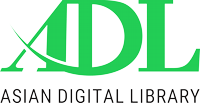Women, work, and technology: The role of generative AI in shaping the social mobility of female entrepreneurs in Pakistan
Keywords:
Generative AI, Social Mobility, Economic Mobility, Informal Sector, Female Entrepreneurs, Digital Literacy, Smart PLS, Pakistan, Technology Inclusion, Multi-Group AnalysisAbstract
This research analyzes how generative AI helps female entrepreneurs in the informal business sector of Pakistan increase their social and economic mobility. The research examines how business growth, training, expanding the market and social status are influenced by AI adoption, its access, related training and digital literacy. To gather data, female entrepreneurs were asked to complete questionnaires the quantitative approach on and PLS-SEM and MGA analysis was performed using Smart PLS. According to findings, generative AI use helps people become more mobile in both social and economic ways. In addition, the ability to use digital and AI tools contributed to the advantage of AI-driven tools. There is a clear difference in mobility outcomes seen in the MGA results which suggests that some people lack access to or use of AI. The study recommends actions that help women access technology, receive useful training and ensure digital innovation supports them, leading to a better climate for women’s entrepreneurship in informal markets.
Downloads
References
Abro, A., Jamali, N. M., Anjum, M. S., & Kibria, A. (2023). Exploring Entrepreneurs' Motivation for Engaging in Crowdfunding and its Potential Outcomes in Pakistan. International Research Journal of Management and Social Sciences, 4(3), 36-49.
Cohen, J. (1988). Statistical Power Analysis for the Behavioral Sciences (2nd ed.). Lawrence Erlbaum Associates.
Dijkstra, T. K., & Henseler, J. (2015). Consistent and asymptotically normal PLS estimators for linear structural equations. Computational Statistics & Data Analysis, 81, 10–23. https://doi.org/10.1016/j.csda.2014.07.008
Fornell, C., & Larcker, D. F. (1981). Evaluating structural equation models with unobservable variables and measurement error. Journal of Marketing Research, 18(1), 39–50. https://doi.org/10.2307/3151312
Hair, J. F., Howard, M. C., & Nitzl, C. (2021). Assessing measurement model quality in PLS-SEM using confirmatory composite analysis. Journal of Business Research, 109, 101–110. https://doi.org/10.1016/j.jbusres.2019.11.069
Hair, J. F., Hult, G. T. M., Ringle, C. M., & Sarstedt, M. (2019). A Primer on Partial Least Squares Structural Equation Modeling (PLS-SEM) (2nd ed.). Sage Publications.
Kapoor, A., & Gaskell, A. (2023). AI and gender equality: Harnessing technology for inclusive development. International Development Review, 45(2), 110–126. https://doi.org/10.1017/idr.2023.007
Khan, F., & Irfan, M. (2023). Digital tools and women entrepreneurship in Pakistan: An exploratory study. Journal of Business and Social Innovation, 5(1), 34–47.
Kibria, A., Alam, A. M., & Siddiqui, M. B. (2024). How Pay Transparency and Living Wage Demands Impacts on Employee Work Ethics Under Inflation Pressures. Bulletin of Management Review, 1(4), 263-282.
Kshetri, N., & Dholakia, N. (2020). Digital literacy and inclusive development in emerging economies. Information Technology for Development, 26(3), 433–448. https://doi.org/10.1080/02681102.2019.1651776
Narijo, H., Shaikh, M., Shah, A. B., & Kibria, A. (2024). Assessing the Influence of Social Entrepreneurship on Community Development: A Quantitative Study. Social Science Review Archives, 2(2), 135-147.
Nunnally, J. C., & Bernstein, I. H. (1994). Psychometric theory (3rd ed.). McGraw-Hill.
Oecd. (2022). Bridging the Digital Gender Divide: Include, Upskill, Innovate. Retrieved from https://www.oecd.org
Qureshi, M. A., & Najam, A. (2021). Women entrepreneurs and the digital divide in Pakistan: Barriers and opportunities. Pakistan Journal of Economic Studies, 4(2), 56–72.
Shah, E., Buriro, A. A., Kausar, R., & Kibria, A. (2025). Work without Recognition: Multi-Group Analysis of the Inferior Jobs of Rural Women vs the Essential Jobs of Urban Women in Sindh. Review Journal of Social Psychology & Social Works, 3(1), 906-920.
Shah, E., Shah, S. L. H., & Kibria, A. (2025). Trapped by Fate and Finances: Women’s Fatalistic Attitude, Economic Dependence, and Domestic Violence in Oppressive Marriages. Review Journal of Social Psychology & Social Works, 3(1), 603-612.
Shaikh, S., & Tunio, M. N. (2022). Gender, entrepreneurship, and social mobility in South Asia: The case of women-led enterprises in Pakistan. Asian Journal of Entrepreneurship and Development, 10(1), 88–102.
UN Women. (2021). Women and ICTs: A Digital Future for All. Retrieved from https://www.unwomen.org
Unesco. (2022). Technology and gender equality: Addressing the digital skills gap. https://unesdoc.unesco.org/ark:/48223/pf0000381792
Venkatesh, V., Thong, J. Y. L., & Xu, X. (2016). Unified theory of acceptance and use of technology: A synthesis and the road ahead. Journal of the Association for Information Systems, 17(5), 328–376. https://doi.org/10.17705/1jais.00428
World Economic Forum. (2023). Empowering women in the age of AI: Global Gender Gap Report 2023. https://www.weforum.org/reports/global-gender-gap-report-2023.
Downloads
Published
Data Availability Statement
The data that support the findings of this study are available from the corresponding author upon reasonable request.
License
Copyright (c) 2025 Dr. Hamida Narijo, Dr. Maria Shaikh, Dr. Mehtab Begum Siddiqui (Author)

This work is licensed under a Creative Commons Attribution-NonCommercial-ShareAlike 4.0 International License.


































